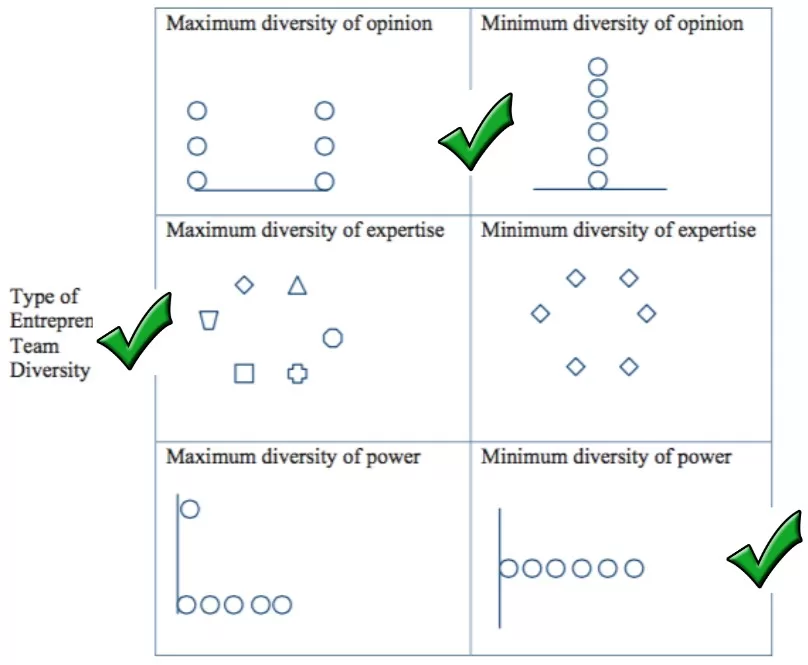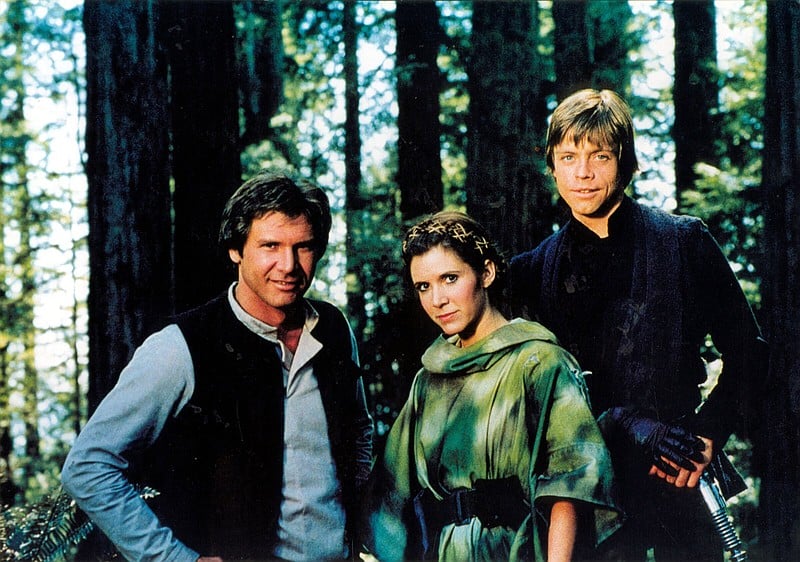Since I’m not an HR professional, I’ll spare the details and instead focus on sharing strategic advice and lessons I’ve learned from fellow business owners who have made mistakes or received poor HR guidance from professional recruiters or HR managers they’ve collaborated with.
Culture
Culture starts to solidify and it becomes much harder to shape once you’ve grown past approximately 25 employees. If you don’t take the time to proactively define your organization’s culture, screen candidates for it, and intentionally cultivate and encourage it, it will be defined for you by the people you inadvertently add to your team. Like Newton’s first law of inertia: an object in motion stays in motion unless acted upon by a force. Negative culture is harder to weed out once it has begun to take root.
Culture entails much more than having a foosball table, beer nights, and flexible work hours. It encompasses but is not limited to:
- Your organizational chart or chain of command (e.g. hierarchical, flat/horizontal, etc.).
On this note, especially if you’re a startup, my advice is not to try to reinvent every wheel. You’re probably already taking on risk by creating a novel solution, addressing an underserved market, or doing business in some other unique way. Try to keep your org chart simple by starting with what already works. You can test and improve from there.
- Your organization’s Mission, Vision, and Values
- Work Ethic (e.g. 9-5 vs. hustle culture, organized and detailed vs. quick and scrappy).
Culture is a long-term play. If you’re solely aiming to make a quick profit and sell your company, this isn’t the approach for you. Then again, you probably wouldn’t be reading this book if that were your goal. Opting to be intentional with culture will, in the short-term, slow down decision-making, as more time is required for deliberation and debate, and to create a space where individuals are encouraged to challenge decisions that may not align with the organization’s values. A culture-conscious approach also lengthens your hiring process, as it takes more time to screen for mission and value fit. But in the long run, fostering the right culture leads to a healthier and more enduring organization.
Mission, Vision, & Values
Are all taught as important pillars for a business. But how do you get it right?
Using Tesla, here’s an example to help you better understand the differences between each of them:
| Mission is the purpose of your organization. | The WHY: Your motivation | To accelerate the expansion of sustainable and renewable energy. |
| Vision is the tangible or measurable outcome that allows you to “see” if it’s been achieved. | The WHAT: Your destination | To become the most attractive automobile company of the twenty-first century by spearheading the world’s shift to electric vehicles. |
| Values are your ethos. | The HOW: Your mode of transportation (how you’ll get there) | Doing the best, taking risks, respect, constant learning, and environmental consciousness. |
There’s understandably a lot of emphasis on the importance of having a clear mission for your organization. I won’t argue. It IS important! Because I won’t go into this topic, if you haven’t already seen Simon Sinek’s TED Talk – How Great Leaders Inspire Action (or read his book Start with Why), I recommend starting there.
Not enough attention has been given to the HOW: your values, which are equally important. Clarity on values enables us to achieve our objectives without selling our souls. The journey is as important as the destination; it’s not about getting there at all costs. Let’s take a closer look at it:
Diversity & Inclusion
You might argue overemphasizing organizational values promotes groupthink. However, it does the opposite. It enables the right kind of organizational diversity and improves creativity without slowing down decision-making. This is possible because clarity on values eliminates ambiguity regarding what is right vs. wrong and encourages diverse ideas that are still grounded in the same mission and ethos.
Since we’re discussing organizational diversity, a topic gaining in popularity, allow me to share some personal insights. This isn’t about hopping on the trendy bandwagon; correctly approaching D&I brings clear benefits for any organization.
Inclusion before Diversity
To look good, some organizations emphasize diversity for diversity’s sake (e.g. % of women or visible minorities on your company’s board of directors); instead, it’s more important to create a culture of inclusion. Diversity metrics will naturally follow when you have a welcoming and inclusive environment.
For instance, if LGBTQ+ employees are recruited without first establishing an inclusive environment, they may feel marginalized. Creating such an environment is not a simple task and requires ongoing effort. An example of an inclusion-oriented initiative could be implementing a ‘no judgment’ policy, allowing employees to ask questions and learn about their LGBTQ+ colleagues without fear of prejudice or mislabeling.
Cognitive Diversity leads to measured Diversity
Focus instead on improving cognitive diversity within your organization. When you put together people who think differently, their different perspectives allow you to come up with more unique solutions to problems. Scott Page, Professor of Complex Systems at the University of Michigan uses the ketchup example to illustrate this point.
“In North America, ketchup is typically stored in the fridge. When running out of ketchup, Americans often default to alternatives like mustard and mayonnaise, which are commonly stored nearby.
In Europe, ketchup is typically stored in the cabinet. Consequently, when it runs out, the popular alternatives are vinegar or Tabasco.”
Without a diverse team, your reflexive response will be mayonnaise every time.
I paraphrase an important insight shared with me by Caitlin Webster, Director of Talent Development at AbCellera, a biotech company in Vancouver specializing in cutting-edge antibody medication. Although my data may be outdated, last I spoke to Caitlin in 2019, AbCellera boasted a 67% female team despite having a male CEO. They achieved this without explicit diversity initiatives by prioritizing cognitive diversity.
“When seeking individuals with different opinions, skills, experiences, ideas, and perspectives, they often originate from diverse backgrounds. Consequently, it’s natural for them to have varying appearances (your diversity metrics).
Recruiting for diversity shouldn’t necessitate compromise. If you genuinely seek the best talent, diversity will naturally emerge within your team.”
So, what type of diversity should you be looking for? Winning teams are:
Moderate in diversity of opinion: Too much and you won’t agree on anything, too little and you risk groupthink.
High in diversity of expertise: The less they overlap, the better. This fosters a wider range of perspectives and encourages the development of more creative solutions.
Low in diversity of power: Don’t let ego get in the way, no one should feel like they’re above or below others. This encourages people to voice their opinions.

But if your team is too diverse, won’t everyone have different opinions? Won’t this slow down the decision-making process in your organization?
Yes, it will, but it won’t lead to the paralyzing debates you imagine. Hire for diversity in experience and cognition, but ensure you filter for alignment on values and mission. Done correctly, these differences in opinions are healthy disagreements that will help encourage experimentation and innovation within an organization. If your employees align with your organization’s values, you won’t have to micromanage them. You can empower them and trust they will make decisions that not only help you achieve your company’s mission but, more importantly, won’t compromise on HOW you’ll achieve it.
Diversity in Sales
If you’re a sales manager, it’s beneficial to embrace and apply D&I initiatives as well. Your team should reflect your customer base. This not only makes it easier for those customers to relate to your organization but also ensures that you better understand them. A diverse sales team is also often more adaptable and creative in problem-solving, benefiting both your customers and your sales processes.
Retention & Offboarding
Good retention is desirable, but aiming for retention at all costs can be harmful. As we’ve discussed, don’t let the measure become the target. Retention is simply an indicator of a good employee experience.
Some degree of churn is natural and should be encouraged. Support employees in their transition and don’t be afraid to provide positive referrals to other companies. It will return as good karma when they speak positively about you to others or potentially return to work with you again in the future.”

Reid Hoffman’s Jedi Tours of Duty with the (Rebel) Alliance is a great analogy that helps us frame the roles of different employees in an organization, embrace natural churn, and understand how to best support them in their personal careers.
Another great tip comes from Episode #137 of the Empire Builders Podcast: If you find yourself short-staffed and relying on existing employees to shoulder the extra workload, consider compensating them a bit more for their additional efforts. This approach breaks the cycle of employees leaving due to overwork and frustration. They shouldn’t have to bear the brunt of your challenges in recruiting and retaining talent.
Lastly, if you have to let someone go because they are causing problems, fire fast; don’t drag it out. This is not only for your own sake but also because it will be better for them to move more swiftly to a place that is a better fit for them or their next opportunity.
